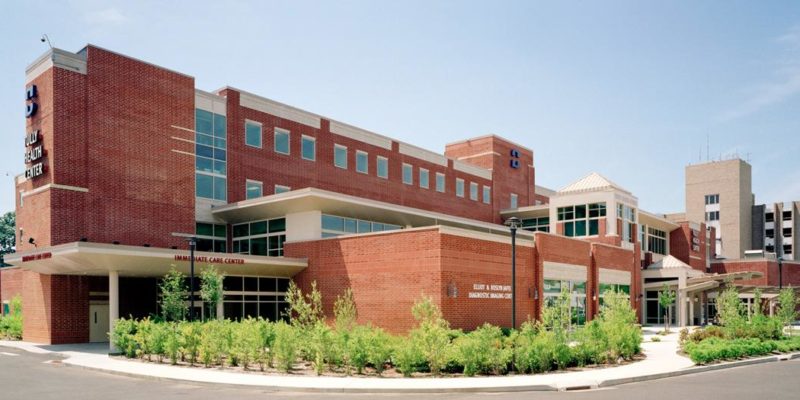Hospital landscapes are one of the best ways we know to bring nature into the healing process.
At Eastern Land Management, we are at the forefront of a movement that is promoting healing, reducing stress, and elevating the quality of life.
From our experience as a preferred healthcare partner, green spaces, and the plants and trees that create them, are not just a way to beautify your outdoor space, but a profound practice that offers a multitude of benefits, a deep sense of satisfaction, and a strong sense of rootedness in the world.
With that in mind, we’re pushing the boundaries of what healing landscapes can achieve; embracing new technologies, sustainability practices, and innovations that improve the performance of hospital grounds, and offer both patients and staff the chance to feel happier, healthier and better by stepping outside.
In nearly 50 years of serving facility managers in the healthcare segment, we’ve been asked a lot of questions and find that the more things change, the more the basics matter. We consolidated our most frequently asked questions around five common themes to help you take the guesswork out of finding the landscape partner that’s right for you.
Q: Facility managers want to make sure landscape teams can keep up with corporate demands. What technologies are being used to shorten the distance between problem and solution, close loops, and save energy and cost?
A: ELM has been in the digital collaboration space for decades and takes a data governance approach to security. We have adopted specialized information integration tools that make us more efficient in our interactions, limit disruptions to healthcare staff. The strategy here is to eliminate all unnecessary “red tape” in order to be more productive, use smart tools and smart people to solve problems faster, and be intentional about meeting our clients in a common zone of opportunity,
Q: Facility managers believe it takes experience to scale efficiently and effectively. Does your landscape team have the correct leadership and skill set, agility, size, scope and talent?
A: ELM’s talent roster includes multiple experts who understand the needs and business models of commercial real estate (CRE) and facilities management, and who have segment experience in healthcare. As a company, we are corporate partners with multiple CRE associations, and have a commitment to grow and scale systematically, all while keeping our eye on the stars and our feet on the ground.
Q: Facility Managers want consistency, quality and service excellence. Can your landscape partner deliver a unified experience?
A: ELM prioritizes market research, customer feedback, benchmarking and data-based insights. But mostly, it all starts with being a good partner, believing that good relationships matter, and understanding our customers’ needs. Our team is empowered to make decisions in the moment and in the field and go over and above to have a positive impact on the people and properties we serve. To us, problems are unnecessary boomerangs. They’ll come back to us if we don’t nip them in the bud.
Q: ARE YOU nimble enough to Be one step ahead?
A: ELM has rewired its operating model to optimize nimble. We have built agile, cross-functional teams around value creation, have instilled a culture of accountability, and invested in our team’s talent, skills, and professional development with advanced certification and training programs, and CEUs. We’re only as good as our bench—our corporate performance depends on the depth and quality of a new generation with talent ready to step in and do whatever it takes to provide fresh ideas and perspective.
Q: what ARE your landscape teams DOING to COMPLY WITH GREEN BUILDING RATING SYSTEMS AND contribute to healthier landscape environments?
A: ELM is a Sustainability ChangeMaker and winner of an award in Fairfield County for drought and conservation management. We are a Community Impact Partner, support our local downtowns, our green cities initiatives, and urban renewal projects. We are advocates for:
- Our clients, our communities, our employees, and the people we serve.
- Our partners’ green goals, our net zero/EV/battery-powered noise-reduction (“When Quiet Matters”) program; our tailored agronomic, integrated pest management, and plant health care plans.
- Training, professional development, certification, and building a culture of learning continuous improvement.
- Pollinator and beneficial-insects, turf-to meadow conversions, hanging baskets, and dramatic container displays.
- Using our talents as landscapers to make our world a more beautiful, greener and healthier place to live, work and play.
Eastern Land Management has been serving leaders in Connecticut and Westchester County’s healthcare industry since 1976.
Contact CEO Bruce Moore Jr. at203- 316-5433 to learn more.


